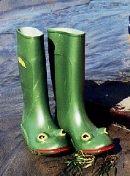Today's books:
Katawampus, by Edward Abbot Parry (1895) and The Invisible Playmate by William Canton (1894).
Katawampus is yet another story of Bad Children who are sent to some fantasy realm to be cured of their badness (fitted for new tempers and good manners). There's a nice chapter on the Parliament of Toys, with the solid old classics as Conservatives, and cheap flashy new toys as Liberals. The tone of this one is pretty light-hearted - very Nesbit-ish, actually, which is not all that surprising since Parry is contemporaneous with Nesbit. Short and sweet, a generally pleasant read, over and done.
The Invisible Playmate: wtf?????
I don't know what to make of this one. I need to re-read, i think, because I feel a bit perplexed about the timeline. The story has a very Turn of the Screw, Jamesian quality to it, which makes it rather eerie. I knew something creepy was going to happen from the beginning - I don't know if it's the doubled narrators (our narrator, plus the letter-writing papa) or some other quality that tipped me off to that.
Quite truly, I don't know what to make of this book. I'd love for someone to simply explain it to me......I don't know Canton, never heard of this story until one of my professors suggested it. It has some Romantic overtones, and reminds me as well of Thomas De Quincey's essays on the deaths of his sister and of little Kate Wordsworth.....it also reminds me strongly of Barrie, and the narrator of The Little White Bird. I'll place The Invisible Playmate in the list of "men who dote on lost/dead/nonexistent children" for now, until I (or someone else) can make some sense of it for me.....
I've begun reading the introduction to Elaine Freedgood's The Ideas in Things (2006), and it's pretty exciting. Freedgood is, I think, proposing a model that is one I've already considered for my own work. More exciting is the newness of her project; her approach to things is, at least according to her, one that has not been undertaken in quite that way before. This makes me hopeful that I can adopt and adapt some of her methodology for my own project in children's lit.
I do wonder about the problem of so much "realist fantasy" in children's lit. Freedgood mentions the abundance of things in realist fiction of the Victorian era, and I think you get that same kind of abundance in children's fiction as well. But much of that is fantasy - often the home/away/home that presents "reality" in the home, and the fantastic in the away. But even the fantasy worlds are chock-full of THINGS. Freedgood is, evidently, attempting to look at the things not as metonyms or allegorical objects, but as things themselves.
I'll have to read more but what little I'm read so far is quite exciting.
Friday, August 17, 2007
Subscribe to:
Post Comments (Atom)




No comments:
Post a Comment